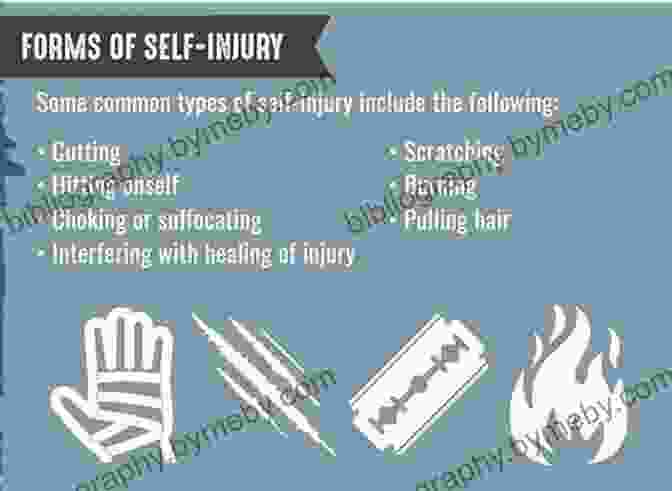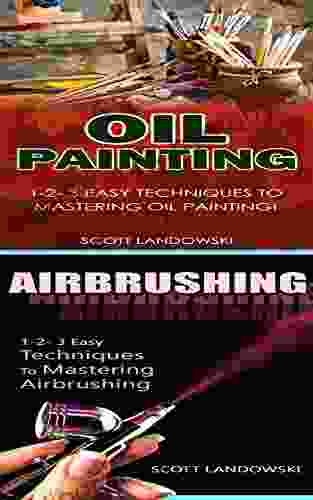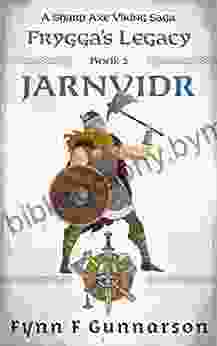Delving into the Enigma of Self-Injury: A Comprehensive Guide for Understanding and Helping

Self-injury, a prevalent issue affecting countless individuals worldwide, presents a complex challenge for both individuals and society as a whole. Understanding and providing effective assistance to those who self-injure requires a multifaceted approach that encompasses empathy, compassion, and evidence-based interventions. This comprehensive guide aims to empower individuals with the knowledge and skills necessary to comprehend the complexities of self-injury and offer meaningful support to those in need.
4.5 out of 5
| Language | : | English |
| File size | : | 1957 KB |
| Text-to-Speech | : | Enabled |
| Screen Reader | : | Supported |
| Enhanced typesetting | : | Enabled |
| Word Wise | : | Enabled |
| Print length | : | 240 pages |
| Lending | : | Enabled |
Understanding Self-Injury
Self-injury, also known as self-harm or self-mutilation, involves intentionally inflicting physical harm upon oneself without suicidal intent. It manifests in various forms, ranging from cutting and burning to hitting and biting. While often associated with negative emotions such as depression, anxiety, and anger, self-injury can stem from a multitude of underlying causes.

Common Causes of Self-Injury
- Emotional Distress: Self-injury can provide a coping mechanism for overwhelming emotions, offering a sense of relief or control.
- Trauma: Past traumatic experiences, such as abuse or neglect, can contribute to the development of self-injurious behaviors.
- Mental Health Conditions: Self-injury is often associated with mental health conditions such as depression, anxiety, and post-traumatic stress disFree Download (PTSD).
- Substance Use: Substance use can exacerbate self-injurious behaviors by impairing judgment and decision-making.
- Social Influences: Peer pressure, social media, and cultural norms can influence the adoption of self-injurious behaviors.
Recognizing Self-Injury
Identifying self-injury can be challenging, as individuals may attempt to conceal their behaviors. However, certain signs and symptoms may indicate the presence of self-injury:
- Fresh cuts, burns, or bruises on the body
- Concealing injuries with clothing or bandages
- Withdrawal from social activities
- Changes in mood or behavior
- Expression of suicidal or self-harming thoughts
Helping Those Who Self-Injure
Approaching individuals who self-injure requires sensitivity, empathy, and a non-judgmental stance. Here are some crucial guidelines for providing effective assistance:
- Safety First: Ensure the immediate safety of the individual by removing any potential hazards.
- Be Non-Judgmental: Avoid criticism or blame, as this can worsen the situation. Instead, approach with compassion and understanding.
- Listen Actively: Allow the individual to express their thoughts and feelings without interruption. Show that you are listening attentively.
- Validate Their Experience: Acknowledge the individual's pain and struggles. Let them know that their emotions are valid.
- Encourage Professional Help: Suggest seeking professional help from a mental health professional or therapist. Emphasize the importance of addressing the underlying causes of self-injury.
Additional Tips for Helping
- Offer Practical Support: Assist with practical tasks such as cleaning wounds or obtaining bandages.
- Provide Resources: Provide information about support groups, hotlines, and online resources.
- Follow Up: Stay in regular contact with the individual to offer continued support and monitor their progress.
- Respect Boundaries: Allow the individual to establish their own pace for healing and recovery. Avoid pushing them to seek help if they are not ready.
- Take Care of Yourself: Supporting someone who self-injures can be emotionally taxing. Prioritize your own well-being and seek support when needed.
Understanding and helping those who self-injure is a multifaceted endeavor that requires a comprehensive approach encompassing empathy, compassion, and evidence-based interventions. By recognizing the causes of self-injury, identifying its signs, and approaching individuals with sensitivity, we can create a supportive environment that fosters healing and recovery. Remember, you are not alone in this journey. Numerous resources and support systems are available to assist both individuals who self-injure and those who care for them.
4.5 out of 5
| Language | : | English |
| File size | : | 1957 KB |
| Text-to-Speech | : | Enabled |
| Screen Reader | : | Supported |
| Enhanced typesetting | : | Enabled |
| Word Wise | : | Enabled |
| Print length | : | 240 pages |
| Lending | : | Enabled |
Do you want to contribute by writing guest posts on this blog?
Please contact us and send us a resume of previous articles that you have written.
 Book
Book Novel
Novel Page
Page Chapter
Chapter Text
Text Story
Story Genre
Genre Reader
Reader Library
Library Paperback
Paperback E-book
E-book Magazine
Magazine Newspaper
Newspaper Paragraph
Paragraph Sentence
Sentence Bookmark
Bookmark Shelf
Shelf Glossary
Glossary Bibliography
Bibliography Foreword
Foreword Preface
Preface Synopsis
Synopsis Annotation
Annotation Footnote
Footnote Manuscript
Manuscript Scroll
Scroll Codex
Codex Tome
Tome Bestseller
Bestseller Classics
Classics Library card
Library card Narrative
Narrative Biography
Biography Autobiography
Autobiography Memoir
Memoir Reference
Reference Encyclopedia
Encyclopedia George Noory
George Noory Roger Lajoie
Roger Lajoie Lara Shannon
Lara Shannon Gary Ferguson
Gary Ferguson Rita Moreno
Rita Moreno Jason Fagone
Jason Fagone Mary Quinlan Mcgrath
Mary Quinlan Mcgrath Gabrielle Bernstein
Gabrielle Bernstein Sheri Koones
Sheri Koones George Christian Pappas
George Christian Pappas Gianni Simone
Gianni Simone Timothy Gowers
Timothy Gowers Gertrude Landa
Gertrude Landa George Lopez
George Lopez Jim Camp
Jim Camp Sophie Lockwood
Sophie Lockwood James G Hollock
James G Hollock Waldtraut Lewin
Waldtraut Lewin Liza Featherstone
Liza Featherstone M E Sarotte
M E Sarotte
Light bulbAdvertise smarter! Our strategic ad space ensures maximum exposure. Reserve your spot today!

 James HayesEmbroider Your Way to Serenity: An Embroidery Of Simple Stitches And Peculiar...
James HayesEmbroider Your Way to Serenity: An Embroidery Of Simple Stitches And Peculiar...
 Giovanni MitchellAn Exposé of the Magicians' Bill In Lemon Trick: Unraveling the Secrets...
Giovanni MitchellAn Exposé of the Magicians' Bill In Lemon Trick: Unraveling the Secrets...
 Heath PowellEasy Techniques to Mastering Oil Painting: A Comprehensive Guide for Artists...
Heath PowellEasy Techniques to Mastering Oil Painting: A Comprehensive Guide for Artists...
 Hayden MitchellUnveiling the Triumph and Tribulations of Women in the Gilded Age: Discover...
Hayden MitchellUnveiling the Triumph and Tribulations of Women in the Gilded Age: Discover... John MiltonFollow ·8.7k
John MiltonFollow ·8.7k John Dos PassosFollow ·2k
John Dos PassosFollow ·2k Efrain PowellFollow ·7.8k
Efrain PowellFollow ·7.8k Jerry HayesFollow ·8.9k
Jerry HayesFollow ·8.9k Frank ButlerFollow ·4.3k
Frank ButlerFollow ·4.3k Gavin MitchellFollow ·17k
Gavin MitchellFollow ·17k Clayton HayesFollow ·3.7k
Clayton HayesFollow ·3.7k Harold PowellFollow ·16.4k
Harold PowellFollow ·16.4k

 Brian West
Brian WestSmedley Butler: The Marines and the Making and Breaking...
: A Marine's...

 Gabriel Garcia Marquez
Gabriel Garcia MarquezIschia, Capri, Sorrento, Positano, And Amalfi: An...
Explore the...

 Felix Carter
Felix CarterAdorn Your Little Princess with Fleur Ange's Exquisite...
Welcome to the enchanting...

 Kelly Blair
Kelly BlairUnveiling the Secrets of the Historical Way and Fishermen...
Step into the pages...

 Angelo Ward
Angelo WardKnit the Cutest Thumbless Mittens for Your Little One:...
Prepare to be...
4.5 out of 5
| Language | : | English |
| File size | : | 1957 KB |
| Text-to-Speech | : | Enabled |
| Screen Reader | : | Supported |
| Enhanced typesetting | : | Enabled |
| Word Wise | : | Enabled |
| Print length | : | 240 pages |
| Lending | : | Enabled |






